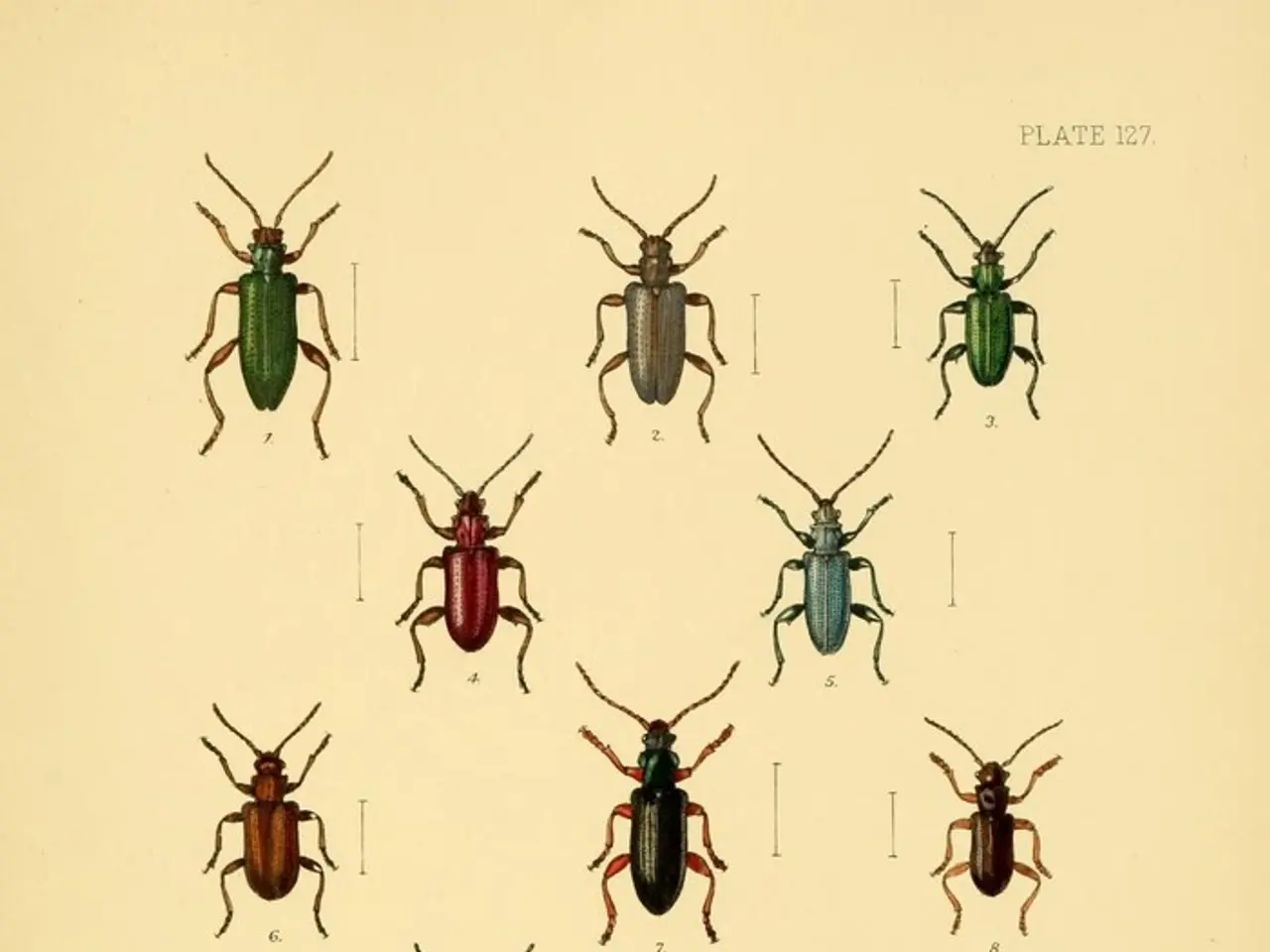Beetles Feed on Decaying Flesh: Breakthrough in Antibiotic Discoveries Possible
The American burying beetle (Nicophorus americus), known for its striking appearance with a black body adorned with fiery red spots and orange-tipped antennae, has caught the attention of researchers for its remarkable resilience to insecticides.
For over two decades, scientists have been investigating this unique insect, hoping to harness its antibacterial, antifungal, and food preservation properties for human use. The latest focus is on its ability to recover from exposure to neonicotinoids, a common insecticide in the United States.
The American burying beetle's physiology comes to its rescue in the form of gene upregulation that protects and keeps it healthy. This ability, if better understood, could greatly improve human health. The American burying beetle's resilience to neonicotinoids could potentially lead to new life-saving drugs.
Researchers have cultured 11 different species of bacteria from the American burying beetle, one of which is a species completely new to science. The beetle's ability to recover from neonicotinoid poisoning may be due to gene upregulation, which could lead to the production of more proteins that help address environmental threats.
The American burying beetle's potential antibacterial properties could be used to fight bacterial infections in humans, such as MRSA. However, this is currently speculative and would require significant further research to translate into clinical antibiotic treatments.
The American burying beetle's range historically and presently includes parts of Canada and several states in the United States, such as Massachusetts, Ohio, Nebraska, and Oklahoma. The beetle's resilience to neonicotinoids may be due to its unique lifestyle, including frequent exposure to meat-eating bacteria and other pathogens. The beetle has evolved biological detoxifiers to cope with these threats.
However, the detailed mechanisms of neonicotinoid detoxification in American burying beetles are not well documented. Research into insect detoxification enzymes, such as cytochrome P450s, often highlights potential biotechnological applications, including novel antibiotic or drug development by exploiting these detox pathways.
In summary, the American burying beetle's resilience to neonicotinoids offers a promising avenue for research, with potential applications in the development of new enzymatic or microbial strategies to degrade or neutralize toxic chemicals, including antibiotic-resistant bacteria or assisting in biodegradation relevant to medicine. Further scientific literature or specialized studies would be needed to answer this precisely.
- The resilience of the American burying beetle (Nicophorus americus) to insecticides, such as neonicotinoids, could inspire conservation efforts in the environment by providing valuable insights into species survival.
- As explorers delve deeper into the intricacies of environmental science, understanding the environmental health of the American burying beetle could offer ways to improve human health, including potential new drugs and antibacterial treatments.
- Besides its striking appearance, the American burying beetle plays a crucial role in wildlife as researchers discover its species-specific bacteria, some of which are unknown to science, that could influence medical-conditions treatment due to its resistance to environmental threats.
- The American burying beetle's remarkable resilience to neonicotinoids is not only capturing the attention of researchers but also shedding light on the potential for technology advancements, such as biodegradation techniques and novel antibiotic development.
- In addition to its crucial role in the environment, education about the American burying beetle can foster a greater appreciation for wildlife conservation and encourage further research into biological detoxifiers, like cytochrome P450s, that could combat various medical-conditions.
- The study and resilience of the American burying beetle (Nicophorus americus) not only emphasize the importance of preserving existing species but also serve as inspiration for human health advancements, underscoring the interconnectedness of environmental health, wildlife, science, and human health.




